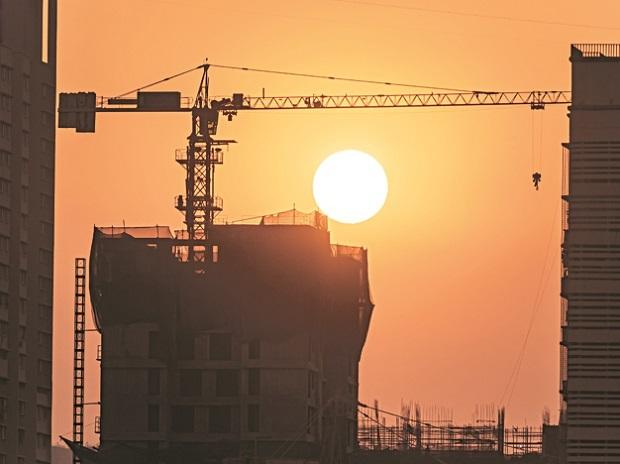Sales of affordable houses, priced up to Rs 45 lakh, are losing steam due to higher mortgage rates and higher EMI outgo for borrowers.
The affordable segment accounted for 32 per cent of overall housing sales in FY22. India Ratings and Research expects that affordable housing sales will decline to 30-27 per cent of overall sales in FY23 and even lower in FY24 on a year-on-year basis.
“High interest rates and EMIs are already pinching the affordable and mid-ticket segment. The premium segment is less impacted by interest rates”, said Mahaveer Shankarlal, director at India Ratings and Research.
In the past 12 months, with a 250-basis point increase in the policy repo rate, home loan interest rates have gone up by around 200 basis points and this has impacted the house purchase affordability by close to 15 per cent, according to property Consultant Knight Frank India.
According to the consultant, in 2022, affordable housing sales grew by 21 per cent to 117,131 units across the top eight cities. But this was less when compared to growth in the mid-segment (Rs 50 lakh to Rs 1 crore segment), sales of which grew by 31 per cent, and the high-end segment (Over Rs 1 crore segment) that saw sales rise by 66 per cent.
“The key reasons for this are that the dent in affordability as a direct result of the increase in home loan interest rates is the most in the affordable housing segment. These buyers do not have recourse to other resources like alternative savings in financial assets and physical assets that they can tap into in the wake of reduced house purchase affordability,” said Vivek Rathi- director research, Knight Frank India.
In comparison, buyers in the mid and premium segments have recourse to alternative savings and also have a relatively lower dependence on mortgages, thereby allowing them to tide over affordability pressures in a better manner, Rathi said.
“A buyer earlier considering a Rs 1-crore house is able to buy a house worth Rs 85 lakh only now and consumers are accordingly planning to support their desire for purchasing a house in the changed landscape now,” he said.
Niranjan Hirnandani , managing director at Hiranandani Group, said it is the first time, in his experience, that the affordable housing segment is growing at a slower pace that the higher income segments. “Otherwise the former always grew faster than other segments,” he said.
“Those in the lower income bracket are not able to afford current EMIs but it has not affected those with higher incomes, ” Hiranandani said.
Anuj Puri, chairman at Anarock Property Consultants, said: “The notional demand for affordable housing is high, but actual affordability is limited. The target audience has been severely impacted by the pandemic, in contrast to premium and luxury category buyers, and many are now deferring purchase decisions in favour of renting.”
According to Anarock, the share of affordable housing in overall housing sales came down from 38 per cent in 2019 to 26 per cent in 2022 in the top seven cities.
“There has been a further dip in overall sales share in Q1 2023, as well. Of total 114,000 units sold in the top 7 cities in Q1 2023, affordable housing comprised just 20 per cent (or about 23,110 units sold). ” Puri said.
Moreover, Puri said that profit margins in affordable housing were already wafer-thin and amid the rising cost of cement, steel, labour, and so on, it has become even more difficult for developers to launch budget homes since increasing prices in this highly cost-sensitive segment defeats the purpose.
According to Anarock, of total 358,000 units launched in the top seven cities in 2022, the affordable housing share was 20 per cent. Back in 2019, of total 237,000 units launched, affordable housing had the maximum share of 40%. “Most recently, in Q1 2023, as many as 110,000 units were launched across the top 7 cities. Of this affordable housing share stood at 20%,” Puri said.
Still, according to Renu Sud Karnad, managing director at HDFC, “Though interest rates have moved up in the past few quarters, they are only marginally above the pre-pandemic levels. Interest rate is just one of the variables in the entire house-buying process. There is a huge element of planning involved with regards to personal space required by a family.”
She further said: “Housing loans largely carry a floating interest rate and are long-term generally for 12 to 15 years. Hence, an increase in interest rates has relatively less impact on the cash flow as compared to other loans which are shorter term. Usually, 2 to 3 interest rate cycles play out during the loan timeframe of 12 to 15 years and borrowers understand that interest rates may also come down during such a long tenure of loan.”
Knight Frank’s Rathi believes that the recent pause in policy interest rate is a big boost to this segment, “because purchases in this segment are directly linked to income/mortgage determined affordability. Any rate cuts from hereon will boost the prospects of this segment.”
GOING SOUTH
Affordable segment accounted for 32% of overall housing sales in FY22 and it is likely to decline to 30-27% of overall sales in FY23 and marginally lower in FY24.
In the last 12 months, repo rates went up 250 basis points home loan interest rates up by around 200 basis points and this has shrunk the affordability by 15 per cent,
In 2022, affordable housing grew by 21 per cent , in mid segment housing salss grew by 31 per cent and high-end segment that saw sales rise by 66 per cent.
Source: India Ratings and Research, Knight Frank India.



